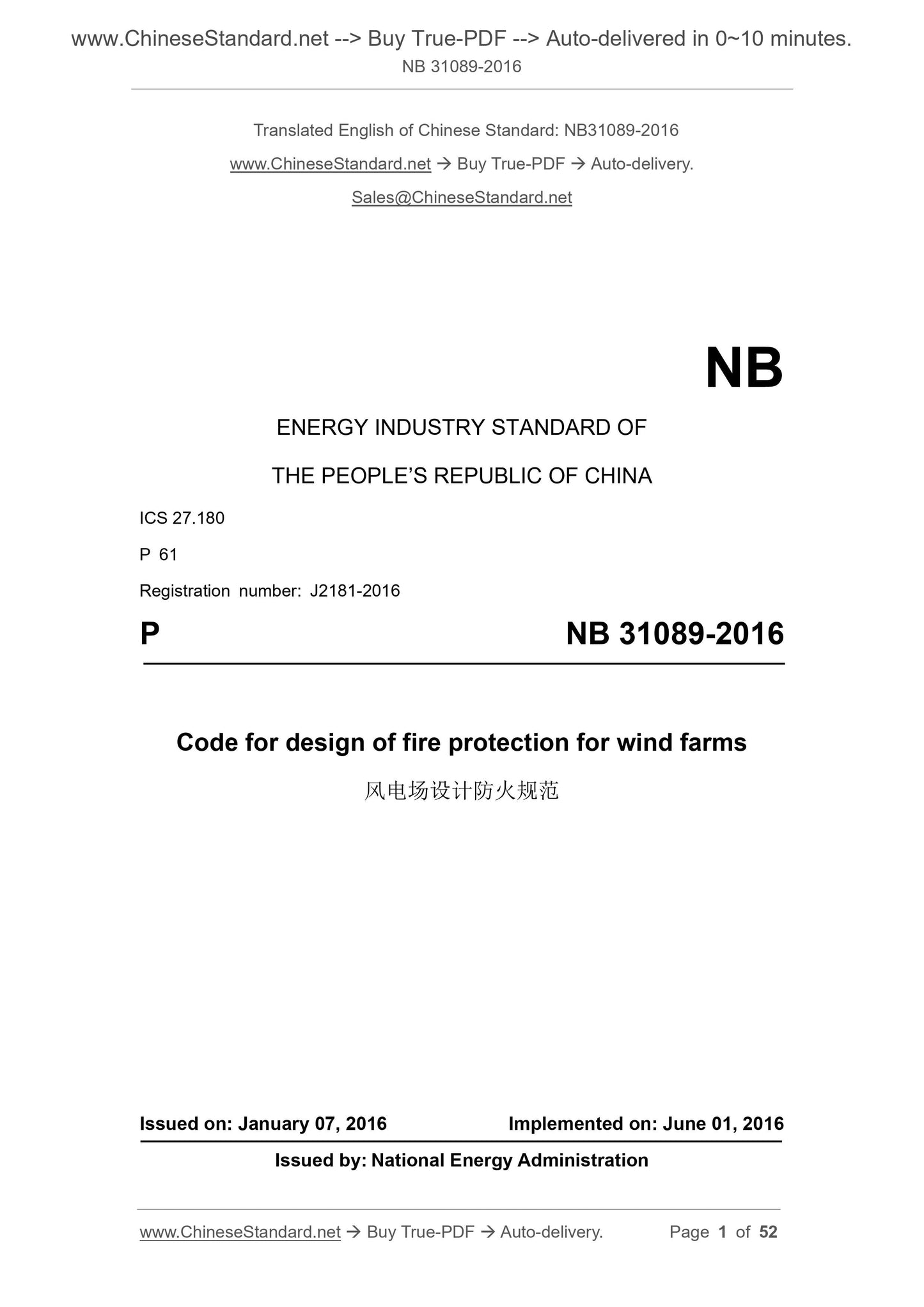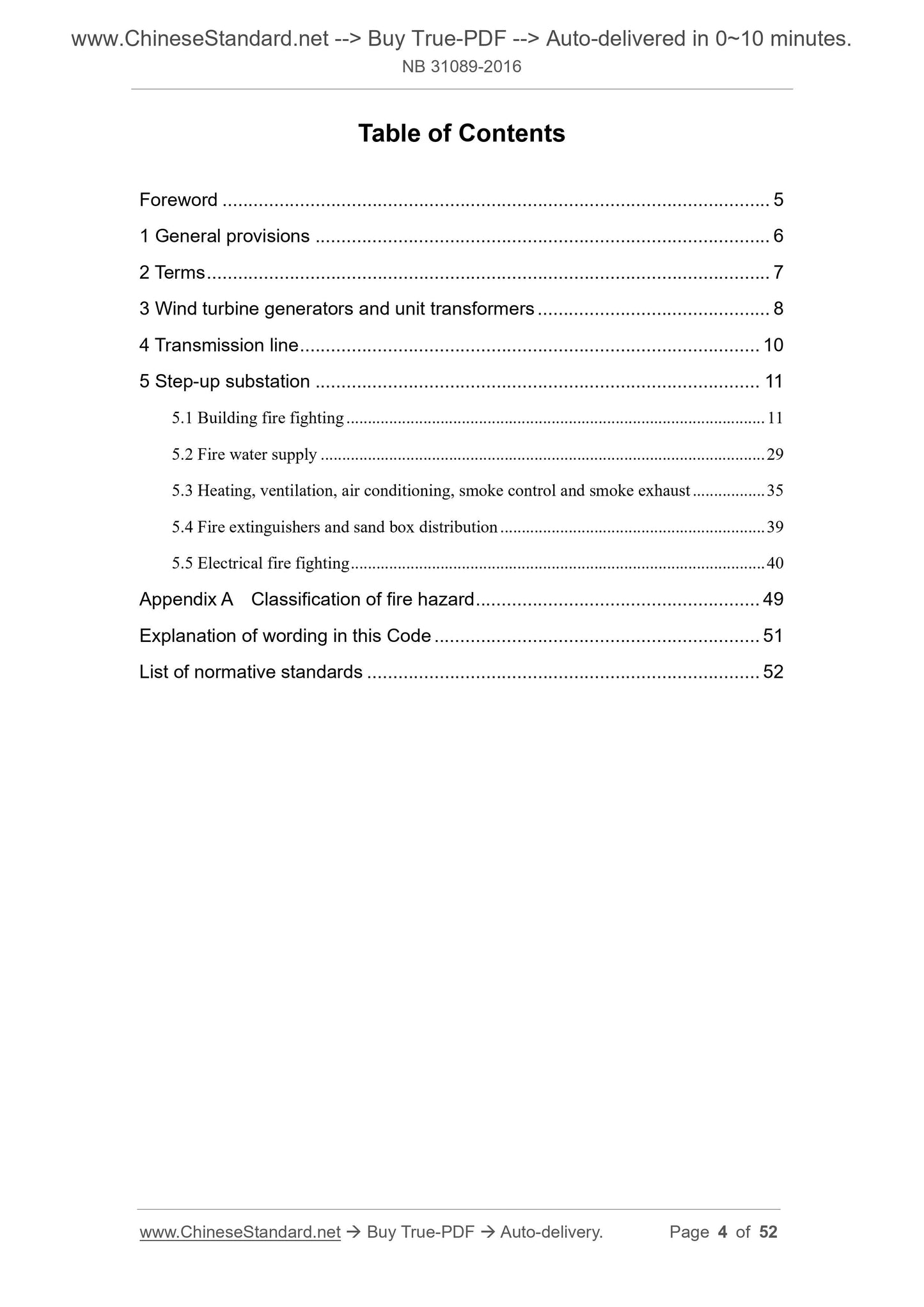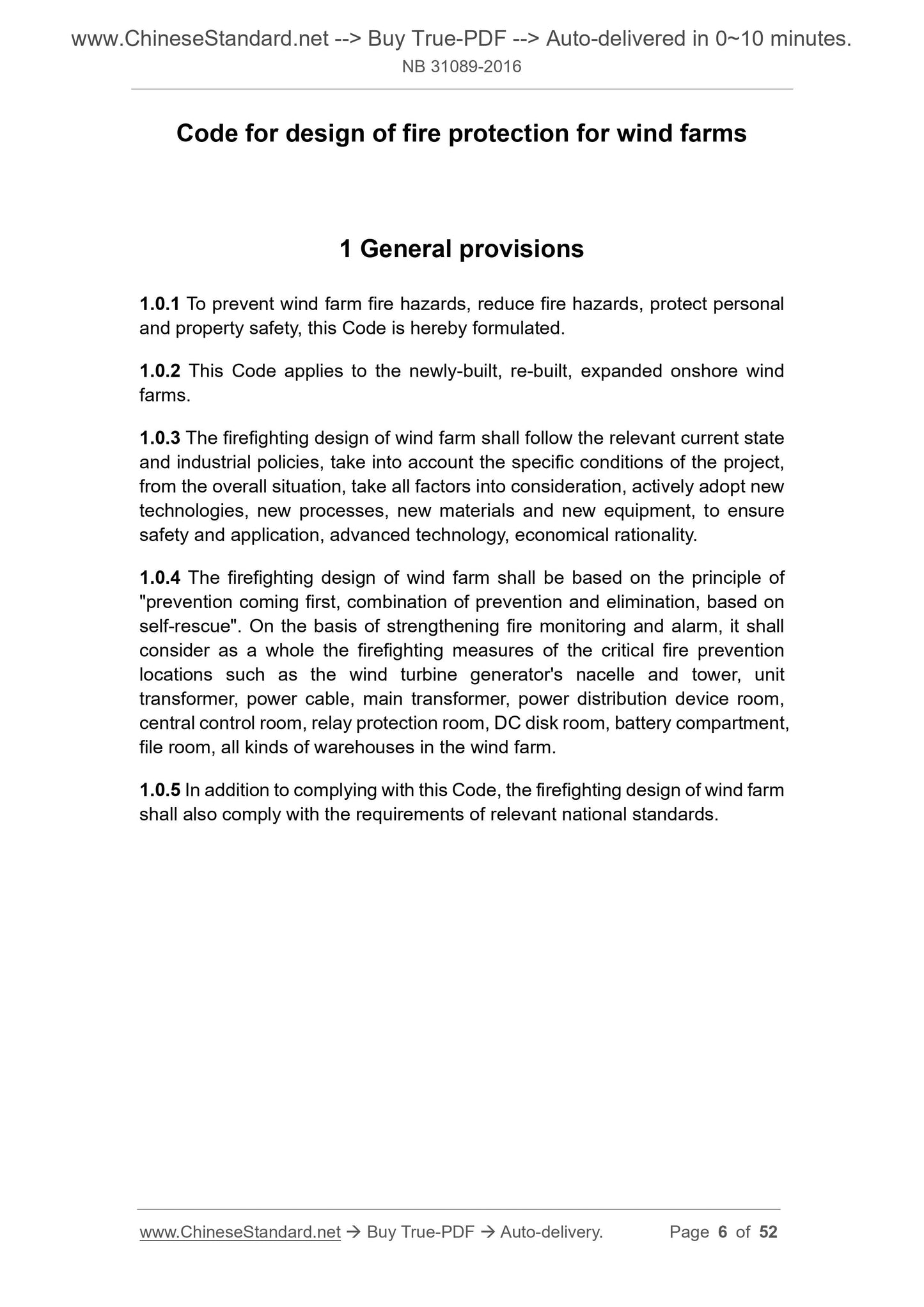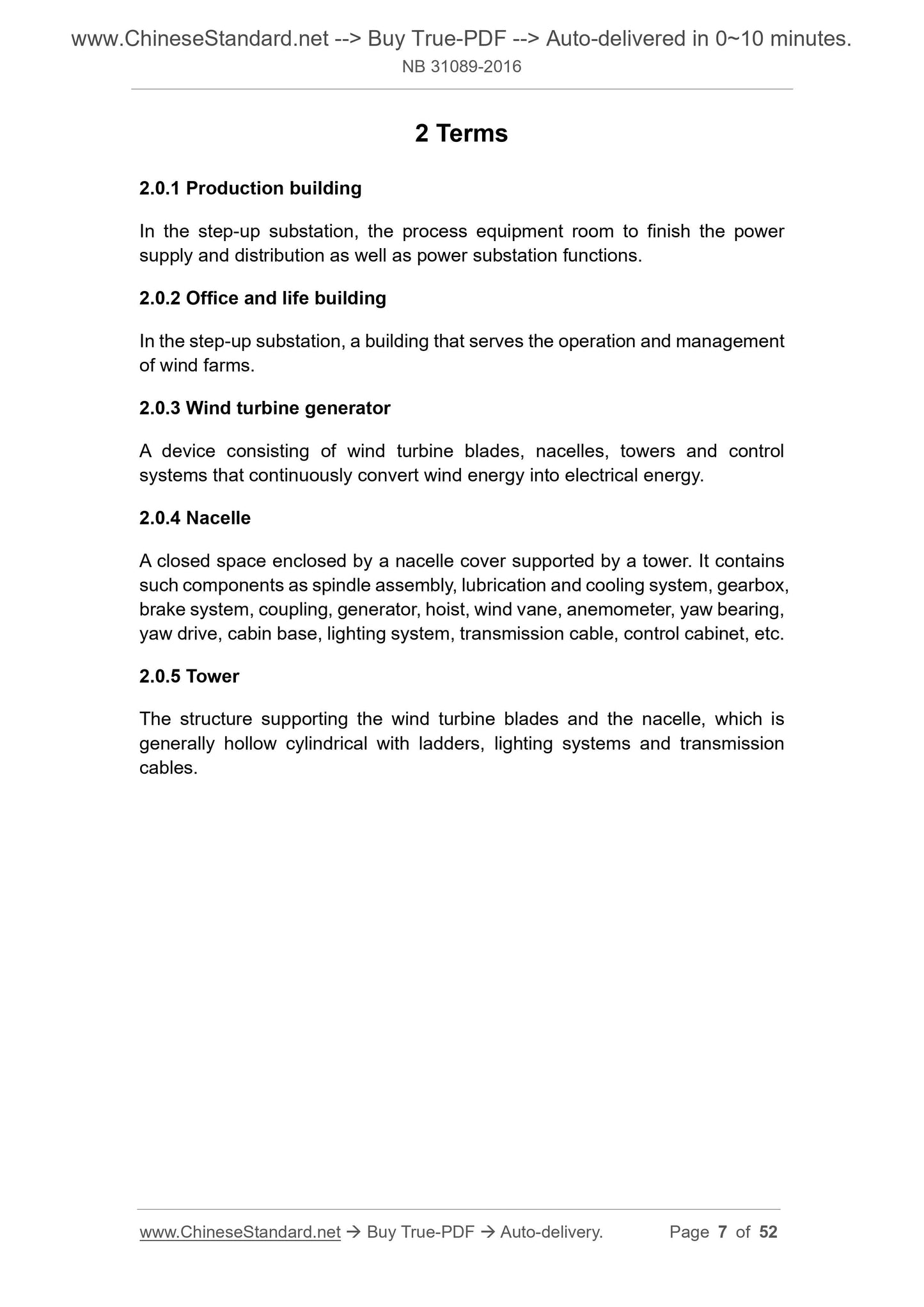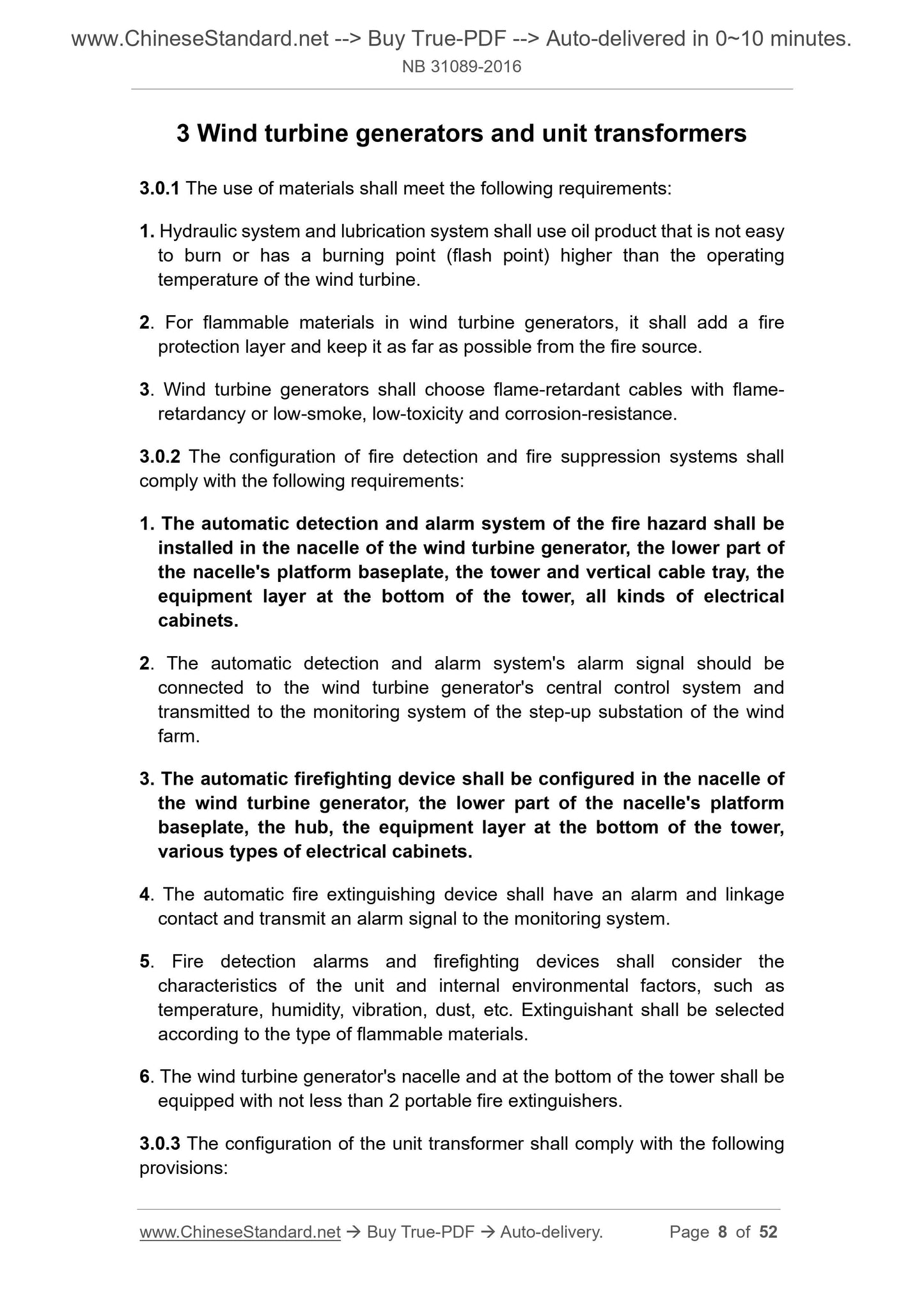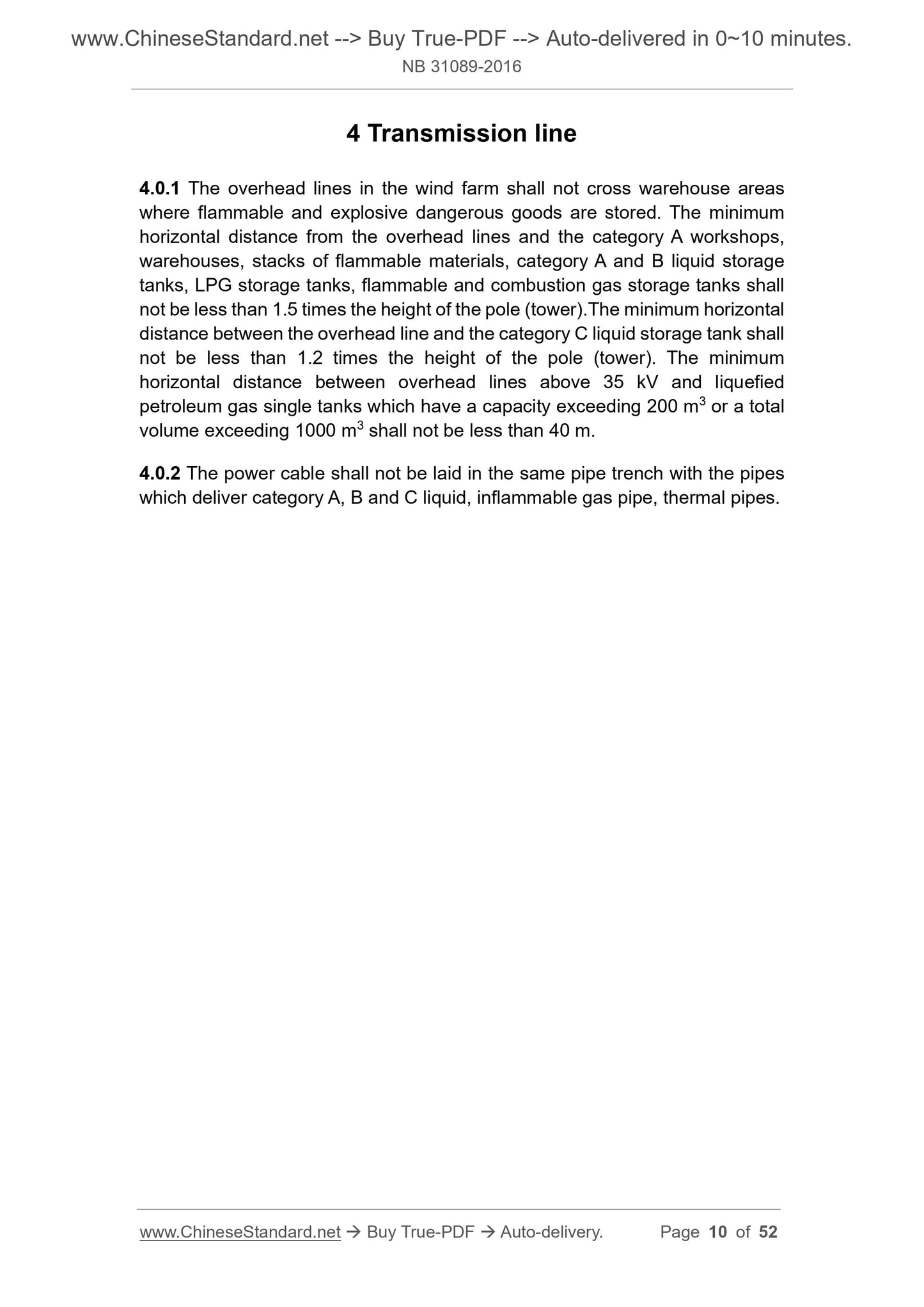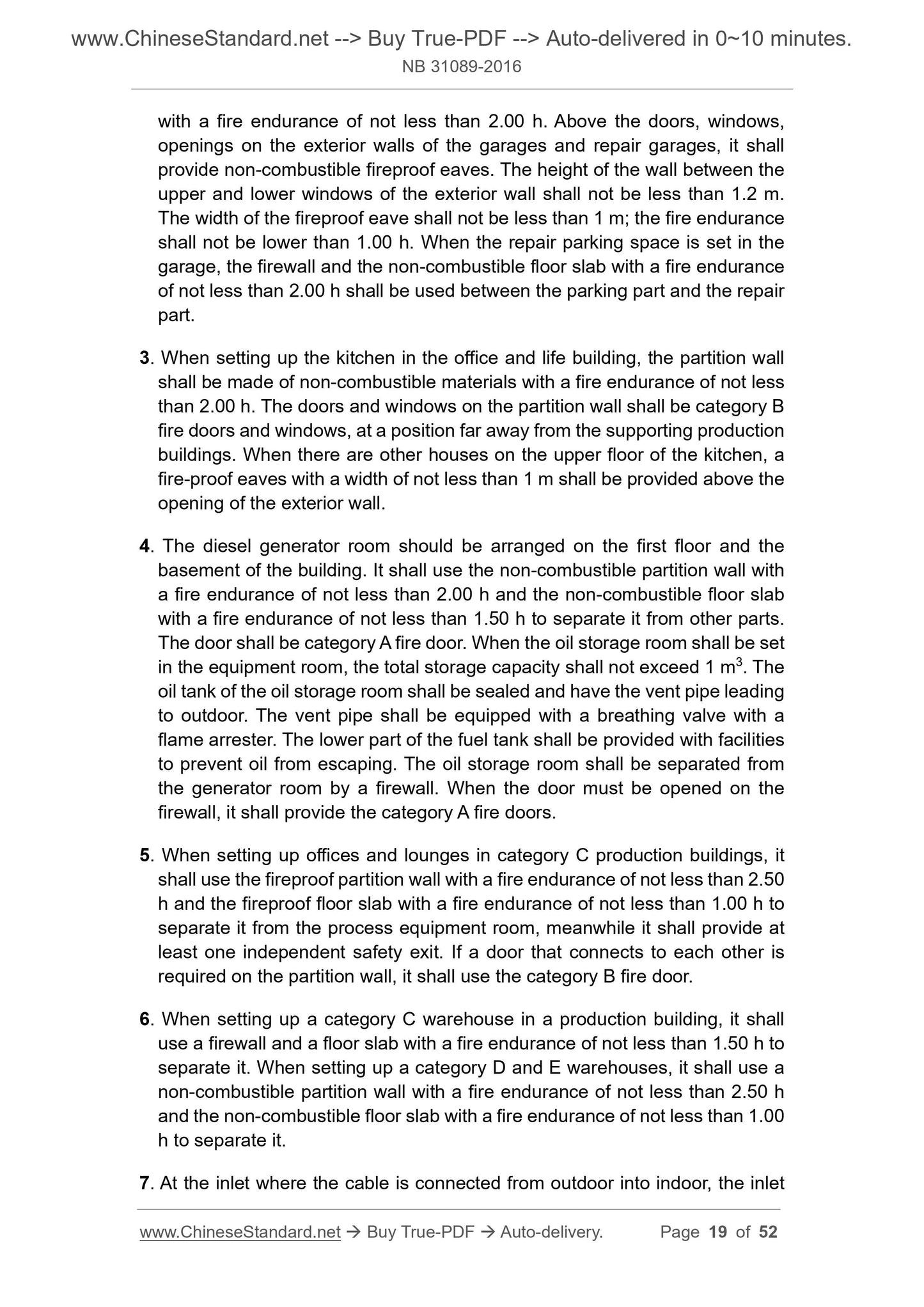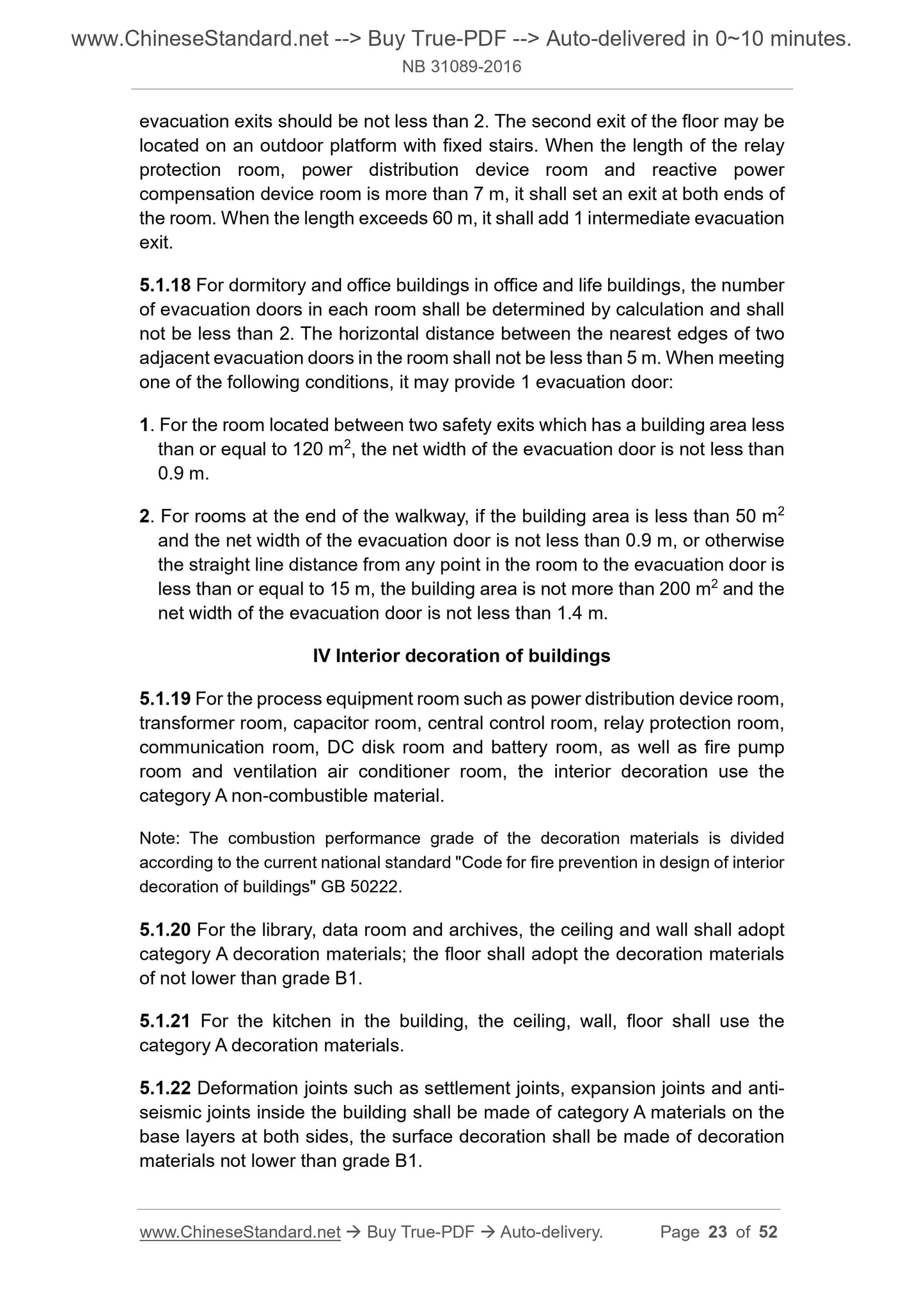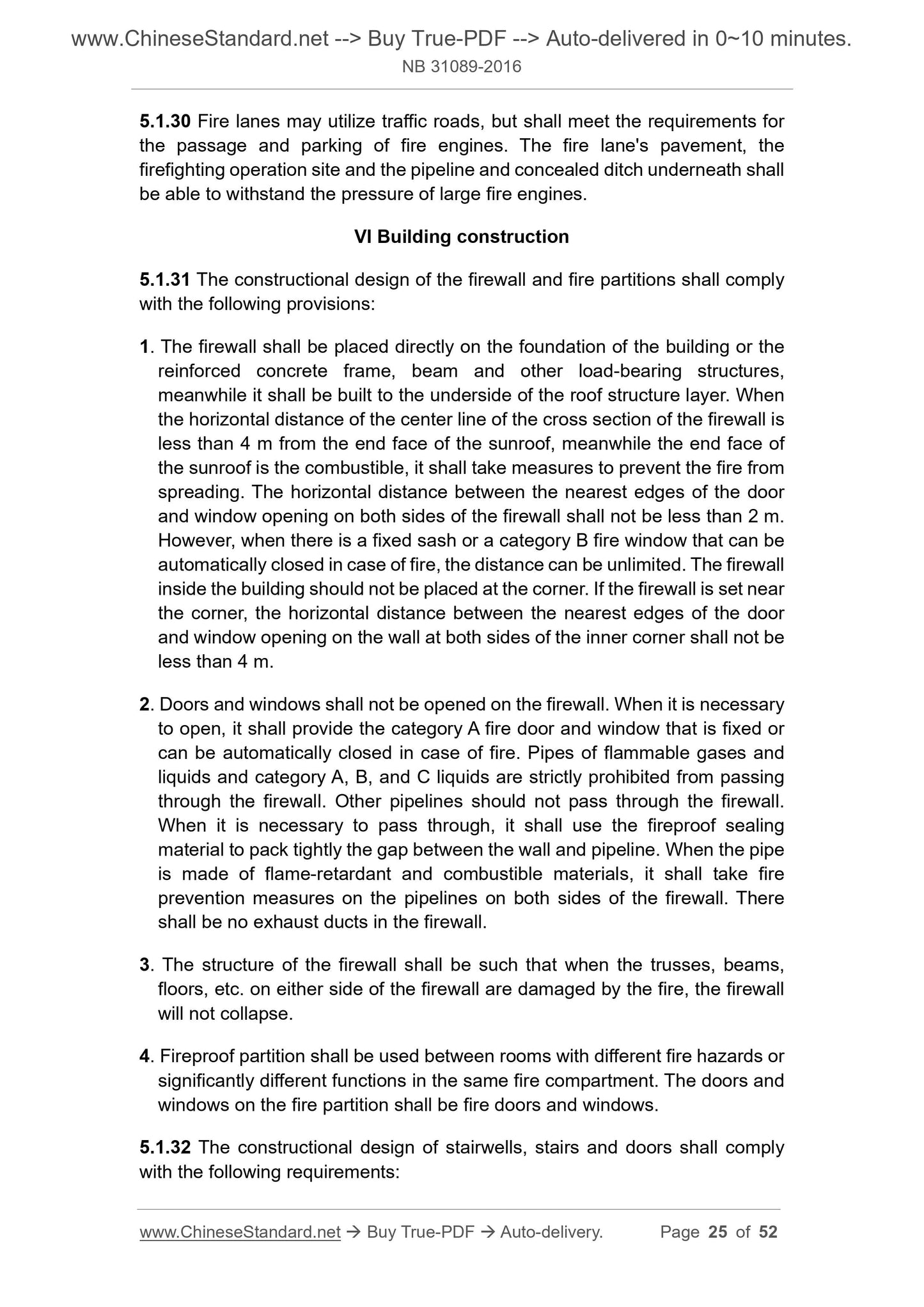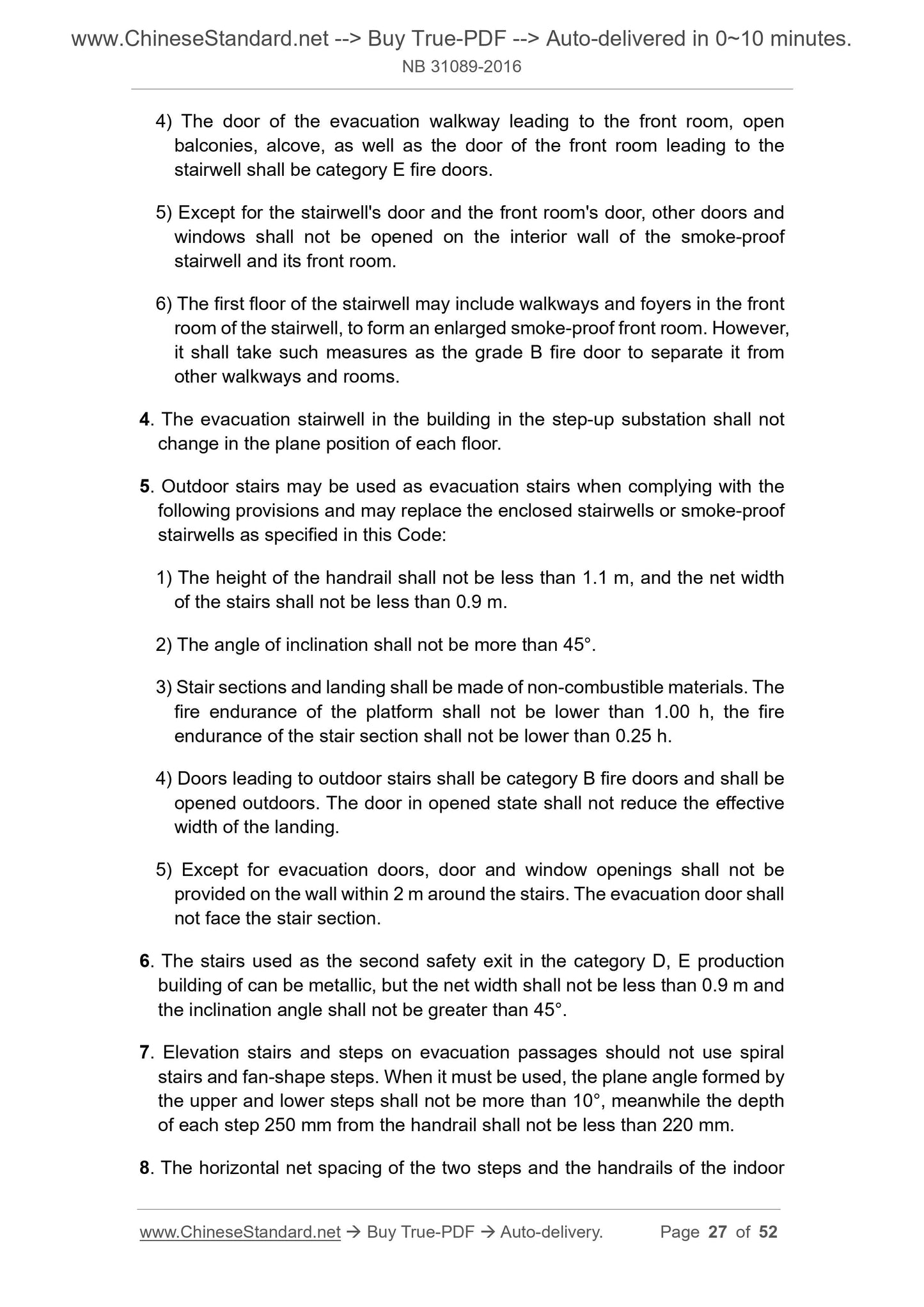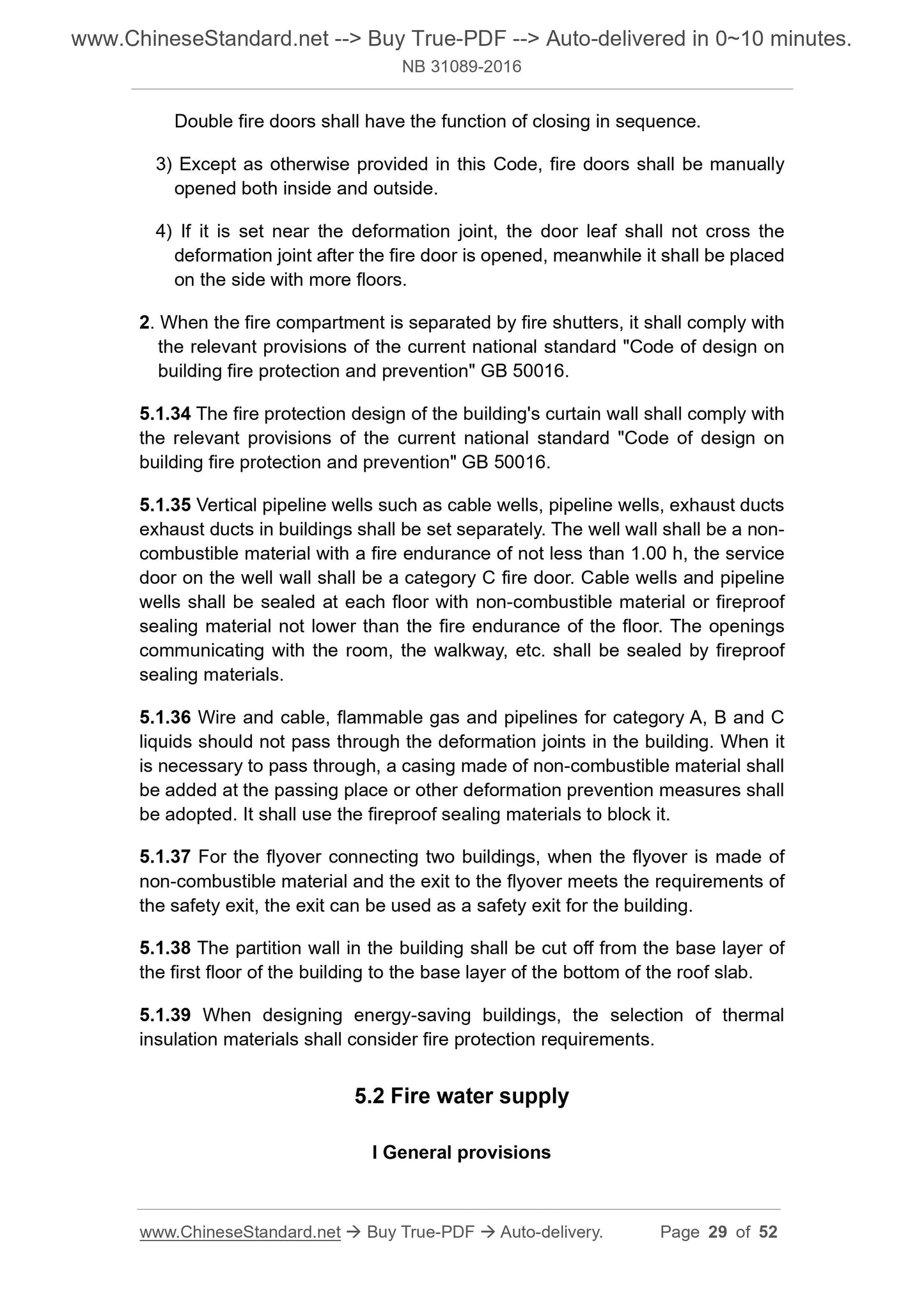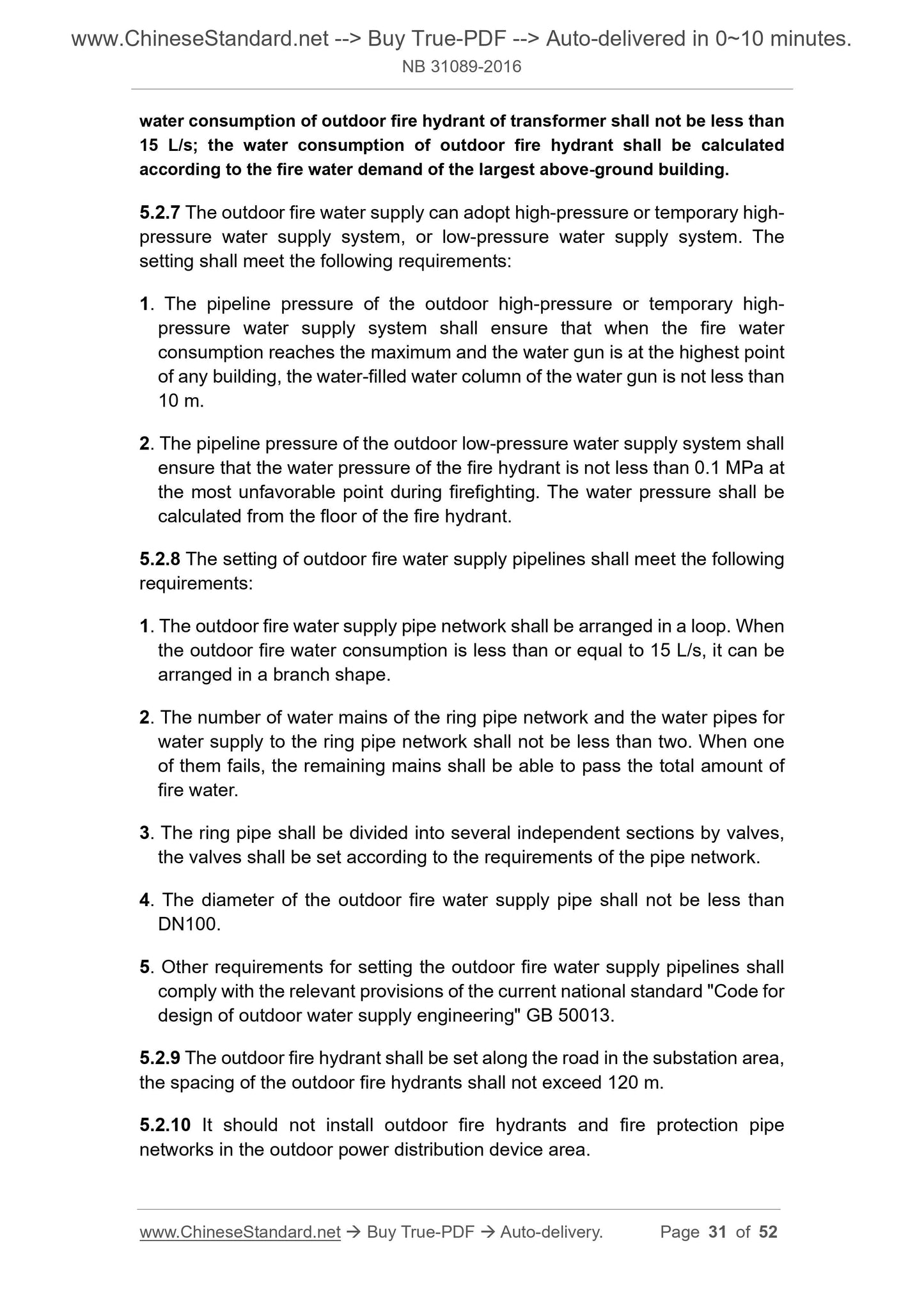1
/
of
12
www.ChineseStandard.us -- Field Test Asia Pte. Ltd.
NB 31089-2016 English PDF
NB 31089-2016 English PDF
Regular price
$725.00
Regular price
Sale price
$725.00
Unit price
/
per
Shipping calculated at checkout.
Couldn't load pickup availability
NB 31089-2016: Code for design of fire protection for wind farms
Delivery: 9 seconds. Download (and Email) true-PDF + Invoice.Get Quotation: Click NB 31089-2016 (Self-service in 1-minute)
Newer / historical versions: NB 31089-2016
Preview True-PDF
Scope
1.0.1 To prevent wind farm fire hazards, reduce fire hazards, protect personaland property safety, this Code is hereby formulated.
1.0.2 This Code applies to the newly-built, re-built, expanded onshore wind
farms.
1.0.3 The firefighting design of wind farm shall follow the relevant current state
and industrial policies, take into account the specific conditions of the project,
from the overall situation, take all factors into consideration, actively adopt new
technologies, new processes, new materials and new equipment, to ensure
safety and application, advanced technology, economical rationality.
1.0.4 The firefighting design of wind farm shall be based on the principle of
"prevention coming first, combination of prevention and elimination, based on
self-rescue". On the basis of strengthening fire monitoring and alarm, it shall
consider as a whole the firefighting measures of the critical fire prevention
locations such as the wind turbine generator's nacelle and tower, unit
transformer, power cable, main transformer, power distribution device room,
central control room, relay protection room, DC disk room, battery compartment,
file room, all kinds of warehouses in the wind farm.
1.0.5 In addition to complying with this Code, the firefighting design of wind farm
shall also comply with the requirements of relevant national standards.
Basic Data
| Standard ID | NB 31089-2016 (NB31089-2016) |
| Description (Translated English) | Code for design of fire protection for wind farms |
| Sector / Industry | Energy Industry Standard |
| Classification of Chinese Standard | P61 |
| Word Count Estimation | 103,116 |
| Date of Issue | 2016-01-07 |
| Date of Implementation | 2016-06-01 |
| Regulation (derived from) | National Energy Board Announcement No. 1 of 2016; Industry Standard Record Announcement No. 2016 of Year |
| Issuing agency(ies) | National Energy Administration |
Share
